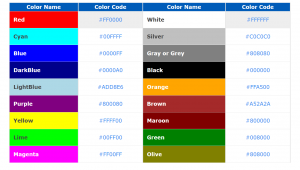Charity work plays a significant role in Singapore, reflecting the nation’s core values of compassion, inclusivity, and social responsibility. From providing support to those in need to creating positive change in various sectors of society, charitable endeavors have helped shape Singapore into a caring and resilient community. In this article, we will explore the importance of charity work in Singapore and highlight some remarkable initiatives that reflect the nation’s commitment to giving back.
1. Community Foundations and Organizations:
Singapore is home to numerous community foundations and organizations dedicated to uplifting the less fortunate and marginalized communities. These entities work tirelessly to address a wide range of issues, including poverty, education, healthcare, and environmental sustainability. One such notable organization is the Community Chest, which provides crucial funding and support to various social service agencies in Singapore. These agencies cater to vulnerable groups, such as persons with disabilities, children at-risk, and the elderly.
2. Volunteering:
Volunteering is deeply embedded in Singapore’s culture, with numerous individuals coming forward to contribute their time and efforts to various causes. Many organizations actively encourage individuals to be part of their volunteering programs by offering a wide range of opportunities. From serving meals at soup kitchens to organizing events for underprivileged children, volunteerism helps foster a strong sense of solidarity and empathy within society.
3. Corporate Social Responsibility:
Singaporean businesses also play a vital role in charity work through their commitment to corporate social responsibility (CSR). Many companies actively engage in CSR initiatives, recognizing that they have a responsibility to give back to society. Through partnerships with community organizations and charities, businesses contribute financially, provide employee volunteer opportunities, and support initiatives that address social and environmental issues.
4. Philanthropy and Donations:
A crucial aspect of charity work in Singapore is philanthropy and generous donations from individuals and corporations. These contributions help fund various initiatives that aim to improve the quality of life for marginalized communities and individuals. The Singapore Red Cross Society, for instance, relies on donations to provide vital humanitarian aid, including disaster relief and blood services. Through philanthropic acts, Singaporeans demonstrate their commitment to making a positive impact on society.
5. Unique Initiatives:
Singapore also boasts several unique charity initiatives that set it apart. One example is “The Food Bank Singapore,” which redistributes surplus food from various sources to those in need. Their efforts not only reduce food waste but also alleviate hunger among low-income families. Another notable initiative is “Initiative for Recycling of Secondhand Uniforms” (IRSU), which collects school uniforms and distributes them to less privileged students. These initiatives not only address immediate needs but also promote sustainability and inclusivity within the community.
Conclusion:
Charity work in Singapore encompasses a wide range of endeavors that reflect the nation’s commitment to empathy, inclusivity, and social responsibility. From community foundations and volunteering to corporate social responsibility and philanthropy, Singaporeans actively engage in various initiatives to uplift the less fortunate and create a positive impact on society.
Through their unwavering dedication to charity work, Singapore sets an excellent example for nations worldwide. By fostering a caring and compassionate society, the city-state ensures that no one is left behind and that everyone has equal opportunities to thrive. In the spirit of giving, let us all be inspired to embrace charity work, wherever we may be, and contribute to creating a better world for all.


 uncovered. From the eclectic offerings at Junkie’s Corner to the meticulously curated pieces at The Heritage Shop, each venue has its own charm and history. But it’s not just about the big names; specialty boutiques and bustling markets also hold secrets that might surprise you. And for those who prefer the convenience of shopping from home, online collections provide an equally thrilling experience. Curious about where to start?
uncovered. From the eclectic offerings at Junkie’s Corner to the meticulously curated pieces at The Heritage Shop, each venue has its own charm and history. But it’s not just about the big names; specialty boutiques and bustling markets also hold secrets that might surprise you. And for those who prefer the convenience of shopping from home, online collections provide an equally thrilling experience. Curious about where to start? evaluate your shipment requirements, taking into account the kind and amount of goods, delivery schedules, and any unique handling needs. It’s crucial to discover a company with the appropriate industry expertise and a demonstrated history in overcoming logistics challenges. Furthermore, you’ll need to assess their service options, such as customs brokerage and storage facilities, to make certain they match your requirements. Curious about how to prevent unforeseen costs and obtain budget-friendly solutions? Let’s delve deeper.
evaluate your shipment requirements, taking into account the kind and amount of goods, delivery schedules, and any unique handling needs. It’s crucial to discover a company with the appropriate industry expertise and a demonstrated history in overcoming logistics challenges. Furthermore, you’ll need to assess their service options, such as customs brokerage and storage facilities, to make certain they match your requirements. Curious about how to prevent unforeseen costs and obtain budget-friendly solutions? Let’s delve deeper.
